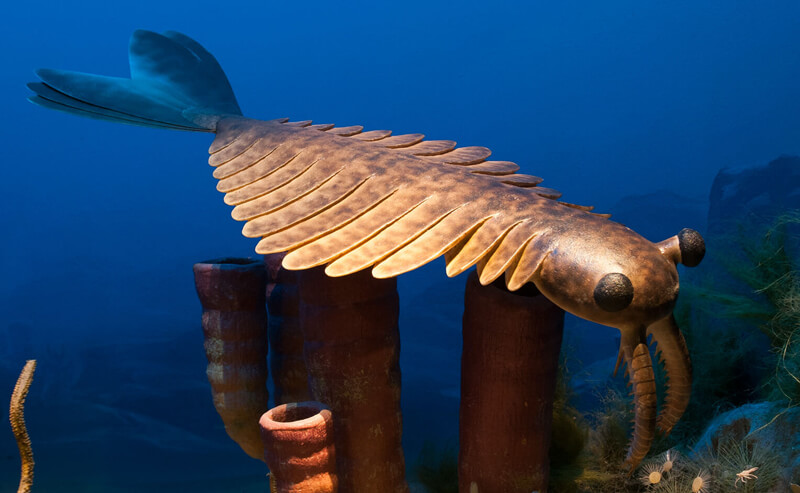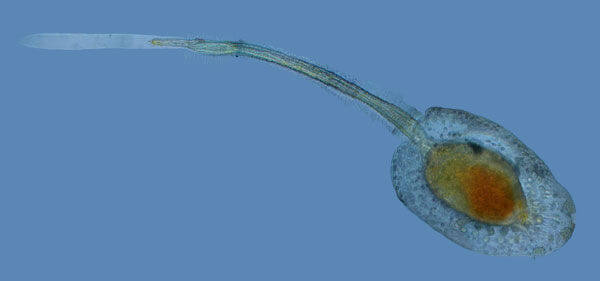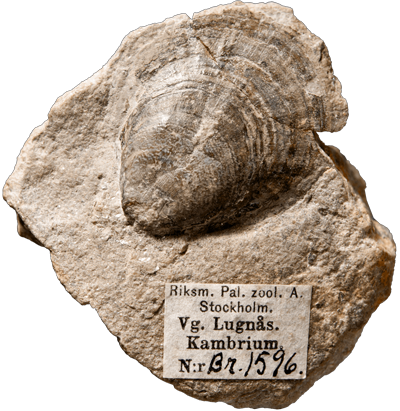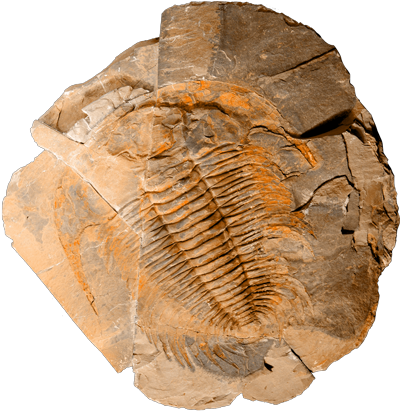Giant step
The Cambrian was a period of profound and far-reaching change in the history of animal life. Biological diversity increased dramatically with a veritable explosion of new species.
The chordate animals, ancestors of the vertebrates, saw the light of day. New organs such as eyes, antennae and legs also evolved during this time. Many of the new animals had skeletons, and some had shells or spikes for protection.
Animals became much more active; some of them hunted and ate other animals. They quickly took over new territories and found new sources of food. Complex interactions between various animals developed for the first time.
Skeletons and shells
A skeleton provides stability to soft body parts, and a place of attachment for muscles. Shells and other hard tissues help to protect against predators and difficult environments.
Hard shells and other types of skeleton evolved in many animal groups during the Cambrian. They provided increased chances of survival and other advantages in new types of environment.
Along shorelines, for example, there is water; but it sometimes recedes or dries up. In such settings, a shell reduces the risk of dehydration.
Hard body tissues are often well preserved in fossils. For that reason, many fascinating details are known about the evolution of shell-bearing animals. For example, shells have been built of several very different materials – calcium carbonate, chitin and silica.

Anomalocaris, an early predator.
Photo: Annica Roos.
Predators arrive
During the Cambrian Period, active and mobile animals evolved an entirely new capability: to hunt and eat other animals. The first predators appeared on Earth.
A major advantage compared with plant-eaters is that predators do not have to eat so much, they satisfy their energy needs with smaller quantities of food.
Hunters must be able to detect, pursue and catch their prey. Predators therefore evolved suitable organs of locomotion and perception. They must also be able to make use of the nutrients in prey animals, which required new ways of digesting food. These capabilities all evolved during the Cambrian Period.
The threat of predators resulted in the evolution of various defences in prey animals. Some evolved hard shells or spikes, others developed methods of avoiding discovery, such as burying themselves.
Notochord, spine, or both
During the embryonic stage, all vertebrate animals have a notochord, a flexible, rod-like structure which in humans is later replaced by a harder spine of bone. It was during the Cambrian that the first animals with notochords evolved.
A notochord provides support for the nerves and muscles of an animal’s back. All modern vertebrates belong to the large group of animals with notochords. They are known as chordates and among them are some currently existing animals without spines, such as sea squirts and lancelet fish.
Sea squirts have a notochord during the larval stage, but it disappears in adults. The adults remain in place on the ocean floor and look like bags. Lancelet fish are the only modern animals that retain their notochords as adults.
.jpg)

Above grown up sea squirt, below sea squirt larva.
Photo: Nick Hobgood, Arjan Gittenberger
Scientists believe that lancelet fish and the first vertebrates may both have evolved from species that resembled sea squirts, by remaining in the mobile larval stage throughout life.
That is a fairly common evolutionary process – adult organisms retaining characteristics of the larval or some other early stage. One example is provided by adult ostriches, which keep the downy feathers of their younger years.



